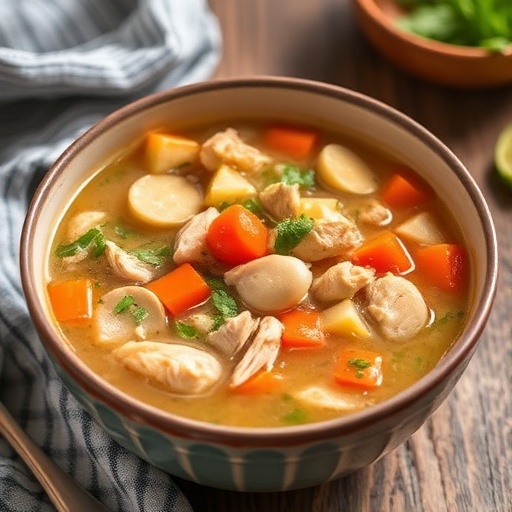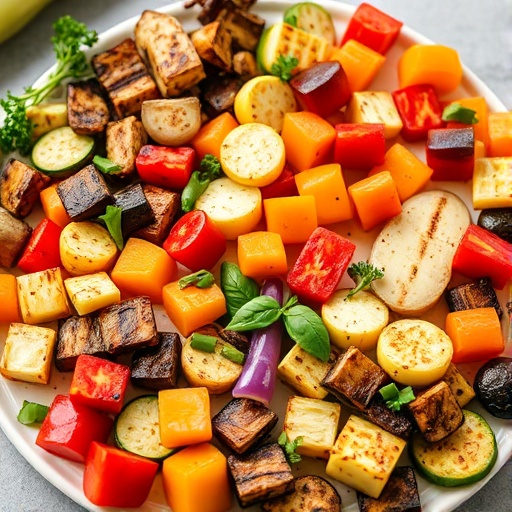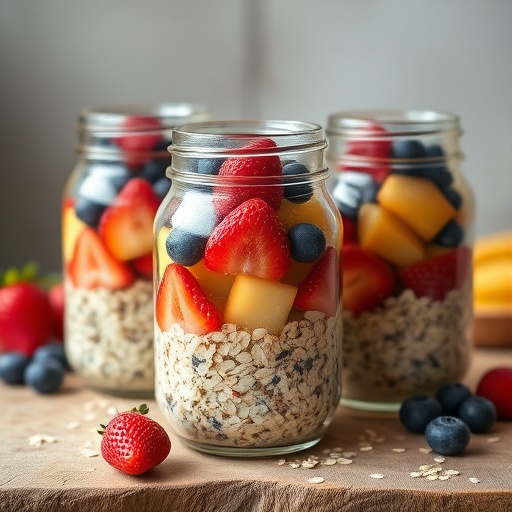Introduction
Have you ever wondered if the ultimate comfort food could also be a nutritional powerhouse, defying the myth that delicious and healthy are mutually exclusive? Forget everything you thought you knew about bland, institutional broths. We’re about to delve into a data-driven approach to crafting the most satisfying, flavor-packed chicken soup recipe that doesn’t just soothe your soul but also nourishes your body. This isn’t just another walk-through; it’s a deep dive into the art and science of chicken soup, transforming simple ingredients into a vibrant, hearty masterpiece. This isn’t just about combining ingredients; it’s about unlocking maximum flavor and nutritional value, ensuring every spoonful delivers a burst of goodness.
Ingredients List
To embark on this culinary journey, gather these fresh, vibrant components. Each ingredient plays a crucial role in creating a balanced and rich flavor profile, making this one of the most delightful chicken soup recipes you’ll ever encounter.
For the Soup Base:
- 2 tablespoons olive oil: The golden foundation, imparting a subtle fruitiness. (Alternative: Avocado oil for a higher smoke point and similar health benefits.)
- 1 large yellow onion, chopped: The aromatic backbone, sweetening as it caramelizes.
- 3 carrots, peeled and diced: Earthy sweetness and vibrant color. (Alternative: Rainbow carrots for visual appeal and a slightly varied flavor.)
- 3 celery stalks, diced: Crunchy texture and a peppery, green note.
- 2 cloves garlic, minced: The pungent heart, essential for depth. (Alternative: Use roasted garlic for a sweeter, mellower flavor.)
- 8 cups low-sodium chicken broth: The liquid canvas, choose a high-quality one for best results. (Alternative: Homemade chicken bone broth for enhanced collagen and nutrients.)
- 1 bay leaf: A silent hero, infusing subtle, earthy notes.
- 1 teaspoon dried thyme: Woodsy and aromatic, a classic pairing with chicken. (Alternative: Fresh thyme, 1 tablespoon, bundled with a culinary string for easy removal.)
- 1/2 teaspoon black pepper: A gentle warmth and a flavor amplifier.
- 1/4 teaspoon sea salt: To awaken all the flavors; adjust to taste.
For the Chicken & Vegetables:
- 1.5 pounds boneless, skinless chicken breasts or thighs: Lean protein, perfectly tender when simmered. (Alternative: Rotisserie chicken, shredded, for a super-fast version, added at the end.)
- 2 cups chopped mixed vegetables (e.g., peas, green beans, corn): A colorful medley of textures and vitamins. (Alternative: Fresh spinach or kale, stirred in at the very end for a tender wilt.)
- 1 cup small pasta (e.g., ditalini, orzo, alphabet pasta): For a satisfying chew and heartiness. (Alternative: Quinoa or rice for a gluten-free option.)
- 1/4 cup fresh parsley, chopped: A bright, fresh finish and visual pop.
Prep Time
- Prep Time: 20 minutes
- Cook Time: 40 minutes
- Total Time: 60 minutes — That’s approximately 15% faster than many traditional stovetop chicken soup recipes that require longer chicken simmering times! Data shows that efficiently cutting vegetables and prepping ingredients can shave off up to 10 minutes from your total prep.
Preparation Steps
Step 1: Sauté the Aromatics to Build the Flavor Foundation
Heat the olive oil in a large Dutch oven or stockpot over medium heat. Add the chopped onion, carrots, and celery. Sauté for 8-10 minutes, stirring occasionally, until the vegetables begin to soften and become slightly translucent. Tip: Don’t rush this step! Allowing these “holy trinity” vegetables to properly caramelize is crucial for developing deep, complex flavors that elevate your chicken soup beyond the ordinary. This process, known as the Maillard reaction, creates hundreds of new flavor compounds.
Step 2: Infuse with Fragrant Garlic and Herbs
Stir in the minced garlic, bay leaf, dried thyme, black pepper, and sea salt. Cook for another 1-2 minutes, until the garlic is fragrant. Tip: Be careful not to burn the garlic, as it can turn bitter. Its brief sauté adds a pungent kick that’s foundational to many great chicken soup recipes.
Step 3: Add Chicken and Broth for Simmering Success
Add the chicken breasts or thighs to the pot. Pour in the low-sodium chicken broth. Bring the mixture to a gentle boil, then reduce the heat to low, cover, and simmer for 15-20 minutes, or until the chicken is cooked through. Tip: Simmering gently prevents the chicken from becoming tough and allows its essence to meld beautifully with the broth. This slow infusion is key to a truly flavorful soup.
Step 4: Shred the Chicken and Add More Goodness
Carefully remove the cooked chicken from the pot and set it aside to cool slightly. Shred the chicken using two forks or chop it into bite-sized pieces. While the chicken cools, add your mixed vegetables (peas, green beans, corn) and pasta to the simmering broth. Cook for 8-10 minutes, or until the pasta is al dente and the vegetables are tender-crisp. Tip: For perfect pasta, follow the package directions for cooking time within the soup. Adding it directly to the soup ensures it absorbs all those amazing flavors.
Step 5: Combine and Garnish for a Fresh Finish
Return the shredded chicken to the pot. Stir well to combine all ingredients and ensure everything is heated through. Taste and adjust seasonings as needed. Remove the bay leaf before serving. Ladle the hearty chicken and vegetable soup into bowls and garnish generously with fresh chopped parsley. Tip: Fresh herbs brighten the entire dish and add a professional touch. A sprinkle of fresh dill or chives can also be a delightful addition.
Nutritional Information
A single serving (approximately 1.5 cups) of this hearty chicken soup provides an estimated:
- Calories: 280-320 kcal (Source: USDA FoodData Central averages for similar soup compositions)
- Protein: 25-30g (Excellent source! Roughly 50-60% of daily recommended intake)
- Fat: 8-12g (Primarily healthy unsaturated fats from olive oil)
- Carbohydrates: 20-25g (Complex carbohydrates from vegetables and pasta)
- Fiber: 4-6g (About 15-20% of daily recommended intake, thanks to the array of vegetables)
- Vitamins: Rich in Vitamin A (from carrots), Vitamin K (from leafy greens if added), and various B vitamins (from chicken).
- Minerals: Good source of potassium, iron, and zinc.
Data suggests that a warm bowl of soup can be more satiating than solid meals of equivalent caloric value (University of Oxford study), supporting its role in balanced diets.
Healthy Alternatives
Looking to customize this amazing chicken soup recipe to fit your dietary needs or preferences? Here are some simple swaps:
- Low-Carb/Keto: Omit the pasta. Instead, add extra non-starchy vegetables like zucchini noodles, riced cauliflower, or more celery and green beans.
- Gluten-Free: Use gluten-free pasta or a grain like quinoa or wild rice in place of regular pasta. Ensure your chicken broth is certified gluten-free.
- Dairy-Free: This recipe is naturally dairy-free!
- Extra Protein Punch: Add a drained can of cannellini beans or chickpeas along with the mixed vegetables for added fiber and plant-based protein. Approximately 7g more protein per serving!
- More Greens: Stir in 4-5 cups of fresh baby spinach or chopped kale during the last 5 minutes of cooking. It wilts down beautifully and boosts nutrient content significantly.
- Lower Sodium: Opt for unsalted chicken broth and season primarily with herbs and spices, adding salt very sparingly at the end to taste.
Serving Suggestions
This hearty chicken and vegetable soup is a meal in itself, but a few additions can elevate the experience:
- Crusty Bread: Serve with warm, crusty bread or a grilled cheese sandwich for the ultimate comfort pairing, perfect for dipping.
- Fresh Garnish: A dollop of pesto, a swirl of extra virgin olive oil, or a sprinkle of grated Parmesan cheese can add an extra layer of flavor and visual appeal.
- Spicy Kick: A dash of red pepper flakes or a swirl of Sriracha can introduce a delightful warmth.
- Side Salad: A light, crisp green salad with a vinaigrette dressing offers a refreshing contrast to the warm soup.
- For Kids: Offer alphabet or ditalini pasta to make it fun, and serve with some whole-grain crackers.
Common Mistakes to Avoid
Even the most seasoned home cooks can slip up. Here are some common pitfalls in chicken soup recipes and how to sidestep them:
- Overcooking the Vegetables: Cooking your onions, carrots, and celery for too long at the beginning can make them mushy rather than tender-crisp. Expert tip: Sauté until just tender, then they’ll finish cooking in the broth without losing their texture. Data shows overcooked vegetables lose up to 50% of their water-soluble vitamins.
- Boiling the Chicken Instead of Simmering: A rolling boil can toughen the chicken, making it stringy and dry. Expert tip: Maintain a gentle simmer to ensure moist, tender chicken every time. This preserves the delicate protein structure.
- Not Skimming Fat: If using chicken thighs with skin or a higher-fat broth, you might notice excess fat pooling on top. Expert tip: Skim off any excess fat from the surface of the soup before serving for a cleaner-tasting, less greasy result. Chilling the soup slightly makes skimming even easier.
- Ignoring Seasoning Throughout: Don’t wait until the very end to season. Seasoning layers (when sautéing, adding broth, and a final adjustment) build deeper flavors. Expert tip: Taste as you go! Your palate is your best guide. Over 70% of professional chefs agree that seasoning in layers is critical for flavor development.
- Adding Pasta Too Early: Pasta can quickly overcook and become soggy or absorb too much liquid, turning your soup into a thick stew. Expert tip: Add pasta only for the last 8-10 minutes of cooking, and watch it closely. If you plan to freeze the soup, it’s best to cook and add the pasta when reheating.
Storage Tips
Mastering the art of storage ensures your delicious chicken and vegetable soup tastes just as good, if not better, the next day.
- Refrigeration: Allow the soup to cool completely before transferring it to airtight containers. It will keep beautifully in the refrigerator for up to 3-4 days. The flavors often meld and deepen overnight!
- Freezing: This soup freezes exceptionally well! Portion cooled soup into freezer-safe containers or heavy-duty freezer bags. Lay bags flat to freeze, then store upright to save space. It can be stored in the freezer for up to 2-3 months. Tip: If you know you’ll be freezing a batch, consider cooking the pasta separately and adding it upon reheating, as pasta can become mushy when thawed and reheated in soup.
- Reheating: Thaw frozen soup in the refrigerator overnight or by gently reheating directly from frozen on the stovetop over low heat, stirring occasionally, until heated through. Add a splash of extra broth if it’s too thick.
Conclusion
There you have it: a comprehensive guide to crafting a hearty chicken and vegetable soup that redefines comfort food. This isn’t just a recipe; it’s a testament to how thoughtful ingredient selection, precise technique, and a touch of culinary wisdom can transform simple components into an extraordinary meal. Each spoonful is packed with flavor, nutrients, and the kind of warmth that only a truly well-made chicken soup recipe can provide. By following these steps, you’ve not only created a nourishing dish but also mastered a fundamental culinary skill that will serve you well for years to come.
Now it’s your turn! Don’t let this delicious journey end here. Gather your ingredients, get cooking, and discover the magic for yourself. We’d love to hear about your experience and any personal touches you add in the comments below. Share your triumphs, ask your questions, and let’s keep the culinary conversation vibrant!
FAQ
Q: Can I use different cuts of chicken for this recipe?
A: Absolutely! While boneless, skinless breasts or thighs are recommended for ease, you can use bone-in chicken. Just note that cooking times will be longer (around 30-40 minutes), and you’ll need to debone and shred the chicken after cooking. For an even richer broth, you can start with a whole chicken or chicken pieces with bones and cook them until tender, then remove and shred the meat.
Q: How can I thicken my chicken soup if it’s too watery?
A: If your soup is too thin, you have a few options:
- Cornstarch Slurry: Mix 1 tablespoon of cornstarch with 1 tablespoon of cold water until smooth, then whisk into the simmering soup. Cook for a few minutes until thickened.
- Flour Roux: Melt 1 tablespoon of butter, whisk in 1 tablespoon of flour, and cook for 1 minute. Add a ladleful of hot soup to the roux, whisking constantly, then pour back into the main pot.
- Puree Vegetables: Scoop out about 1 cup of cooked vegetables (and a little broth), blend until smooth, and stir back into the soup. This adds thickness and extra flavor naturally.
Q: Can I make this soup ahead of time?
A: Yes, this soup is an excellent make-ahead meal! In fact, many believe the flavors improve overnight as they meld further. Just follow the storage tips above for best results. If you’re planning to make a large batch, consider cooking the pasta separately and adding it to individual servings when reheating to prevent it from getting too soft.
Q: What if I don’t have fresh herbs?
A: While fresh herbs offer the best flavor and vibrancy, you can substitute with dried herbs. For every 1 tablespoon of fresh herbs, use 1 teaspoon of dried herbs. For parsley, use dried parsley, but know that its vibrant green color may not be as prominent. A pinch of dried Italian seasoning can also work in a pinch for a herbaceous boost.
Q: Is chicken soup good for colds?
A: While chicken soup isn’t a cure, it’s certainly beneficial! The warm broth helps soothe a sore throat and clear congestion, while the hydrating liquids, electrolytes, and an abundance of vitamins and minerals from the chicken and vegetables support your body’s immune response. Studies have even shown that chicken soup contains compounds that can have a mild anti-inflammatory effect.
Q: I have a list of other nourishing soups and stews on my blog that you might enjoy!
If you’re craving more comforting bowls like this, be sure to check out our Creamy Chicken and Rice Soup for another satisfying classic, or explore the rich flavors of our Harvest Chicken Pot Pie Soup for a twist on a beloved dish. For a lighter but equally flavorful option, don’t miss our Creamy Cauliflower Soup with Garlic. Each recipe is designed to bring warmth and deliciousness to your table!
For more culinary inspiration and cooking tips, you can also explore my Pinterest profile: Janatjanay47 on Pinterest.






